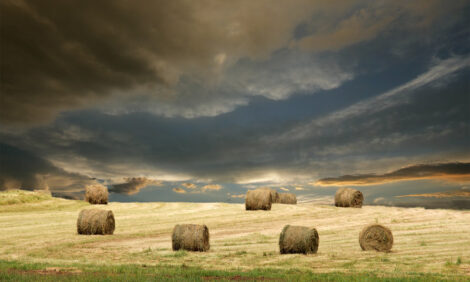



Bovine respiratory disease prevention
Intervention colostrum feeding in at-risk calves reduces the risk of bovine respiratory disease[Excerpts of presentation by Melissa Cantor, PhD, Department of Animal Science, Penn State University, during the 2024 Tri-State Dairy Conference]
Bovine respiratory disease is a challenging disease to manage in calves because the presenting signs are complex: ear tilt, cough, labored breathing, cloudy eye or nasal discharge, and elevated temperature. These are all cumulative factors associated with the disease (Love et al., 2014).
The majority of bovine respiratory disease cases (90%) are bacterial which supports producer usage of antimicrobials for this disease (Urie et al., 2018).
Since the disease is complex, it is paramount that dairy producers maintain active patient client relationships with their veterinarians to ensure that relapsed cases are uncommon. However, preliminary work at one research station had observed that one-third of the calves failed to respond to treatment (Cantor et al., 2022), which agrees with more recent work (Sáadatnia et al., 2023).
Bovine respiratory disease also has temporal effects on growth performance in young calves (Rhodes et al., 2021; Sáadatnia et al., 2023) and has been associated with reduced milk production in the first lactation (Dunn et al., 2018).
It is important to intensively manage sick calves to ensure recovery on dairy farms.
Intervention colostrum feeding
There is an emerging field of research on the feeding of a supplement with immune-supportive properties, known as nutraceutical feeding. Colostrum-focused nutraceutical research is emerging in postnatal calf nutrition studies on preventative or intervention feeding strategies.
Several nutraceuticals with bioactive properties have been explored to improve calf responses to diarrhea, such as lysolecithin (Reis et al., 2021), lactoferrin (Pempek et al., 2019), oligosaccharides (Reis et al., 2022), and reconstituted bovine colostrum powder (Chamorro et al., 2017; Kargar et al., 2020; McCarthy et al., 2023).
Most studies that investigate nutraceuticals for calves use constituents that are naturally found in bovine colostrum, such as lactoferrin, oligosaccharides, and dried bovine colostrum (reviewed by Carter et al., 2021).
For bovine respiratory disease, no positive benefits were observed in preventative colostrum feeding except for one study (Charmorro et al., 2017). This is likely because calves used in these studies were fed colostrum to 15 days of age which is before the risk phase for bovine respiratory disease infection in calves (Urie et al., 2018).
Some of these studies experienced high disease pressure and high mortality rates (McCarthy et al., 2023), which would limit the effectiveness of a nutraceutical program for calves experiencing poor immune resilience.
Young calves fed colostrum at diarrhea onset for up to four days reduced their diarrhea severity but got no benefit in reducing bovine respiratory disease (Carter et al., 2021).
For older calves at risk for bovine respiratory disease, feeding colostrum at 0.13 kg/day for 3 days ameliorated the likelihood and severity of disease (Cantor et al., 2021). However, this evidence suggests that growth benefits were only observed in calves fed a diet that achieved limited growth.
Feeding colostrum as an intervention to older 30-day-old calves who deviated from their milk-feeding patterns at a rate of 0.13 kg/day for 3 days reduced the likelihood of pneumonia and decreased pneumonia severity compared to controls.
The research suggests that intervention colostrum feedings in calves reduce the chances of getting bovine respiratory disease.



